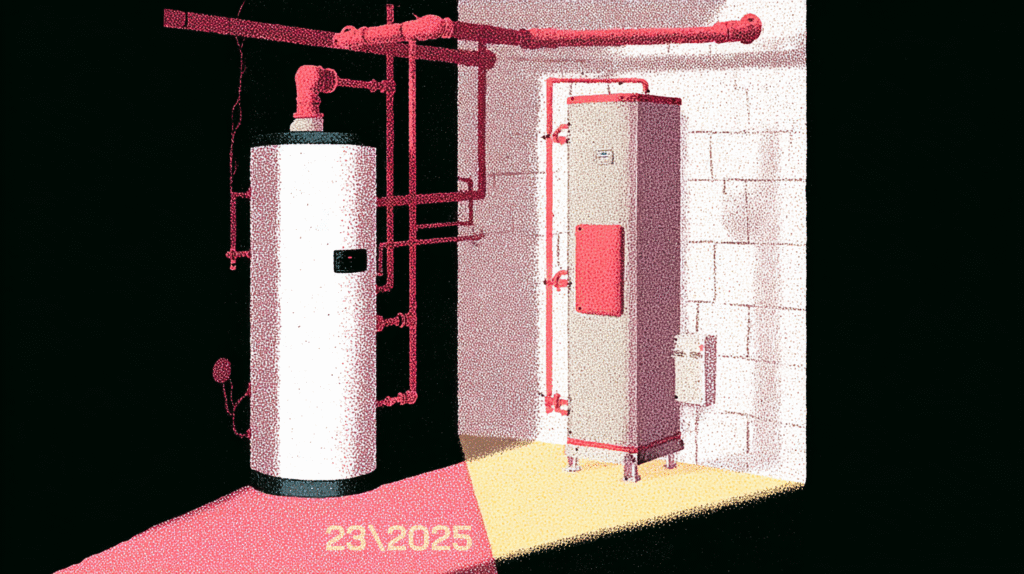
Image © Jose 2025
This week we had a showdown, between two boilers. Yes, two boilers fighting each other for our attention and budget, each one with its cohort of followers and fans, each with their pitching sessions. It’s a big investment, and one we hope will outlast us, the way the existing boiler served and outlasted the previous owner. In many ways, this became a classic product battle. But thanks to my wife, who was resilient and relentless, we endured the process to see who the winner would be.
In most cases, we’ve been offered products and solutions by our general contractor. And we understand his choices, he works with people and systems he knows, has seen perform well, and maybe even benefits from through referral or volume discounts. That’s normal. When we ask for alternatives, we either get more of the same, or we get openness for us to look ourselves, with his willingness to install and even back the product with a warranty if needed.
Our household has roots in Europe. And our extended family does too. There’s experience with products that, in many cases, are just better – better design, better overall quality – but often more expensive for exactly those reasons. In the U.S., the market has either cheaper imports from the Far East or domestic solutions that are lower quality but still more expensive, simply because it still costs more to manufacture here. And then there’s installation and maintenance, which skyrockets when products don’t have certified local installers or available service technicians.
So, when we suggest something like a German boiler, we usually hear the same refrains: it’s harder to get, harder to install, harder to service, more expensive, and slower to deliver. And in most cases, those objections win. We compare, we calculate, and we go with what the contractor recommends. But the boiler was different.
The local favorite was Lochinvar. But we’d heard good things about Viessmann from Germany. At first glance, they look very similar. And for a while, we were told they serve slightly different household sizes. But when you dig deeper, and especially when you experience the details – both functional and formal – the differences begin to speak louder.
Let’s start with noise. The Viessmann has been designed with a different gas burner, an insulated enclosed casing, and it’s heavier (which absorbs vibration and sound). Functionally, it’s a fully integrated system, everything is designed to work together. Not the Swiss-army-knife modularity you find in other systems, but a deliberate, seamless approach. Controls are smarter. Thermal reserves are larger.
And then there’s form. Aesthetics. You might say who cares, it’s a boiler, it goes in the basement. But you do care when you see it. The Viessmann speaks Bauhaus. It feels engineered. Intentional. The seams are precise. The interface is simple. There’s weight to it (literal and metaphorical). Meanwhile, the Lochinvar, while solid, felt modular in the unromantic sense: exposed seams, plastic display, built for function and cost. The older gentleman who demoed the Viessmann got me with one line: “It even has a place for me to set the front panel while I’m cleaning the filter.” That’s design. That’s empathy for the user, any user. Even the guy doing the maintenance.
The Viessmann is a better boiler. Functionally and formally. It reflects a systems-thinking approach, where performance and aesthetics meet. The Lochinvar delivers solid performance in a utilitarian wrapper. And that’s okay. It’s likely more popular. Maybe it has better margins for the manufacturer and for the contractor. Maybe it’s more responsive when there’s a problem, even if it needs attention more often. Maybe, from a cost-value perspective, it hits the right sweet spot for most customers.
All that may be true.
And yet, we still chose the Viessmann. And it wasn’t the designer who made the call. It was the cost-sensitive, functionally minded, no-nonsense customer in the house. A nice little homage to good design, attention to detail, and a clear understanding of what matters beyond commodity.
Comments
Powered by WP LinkPress